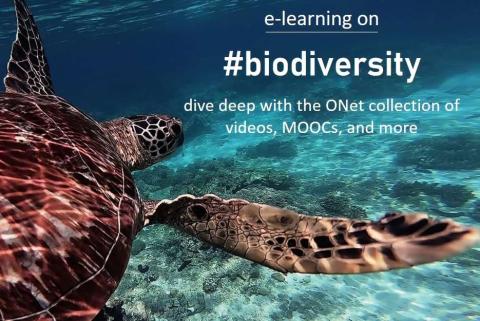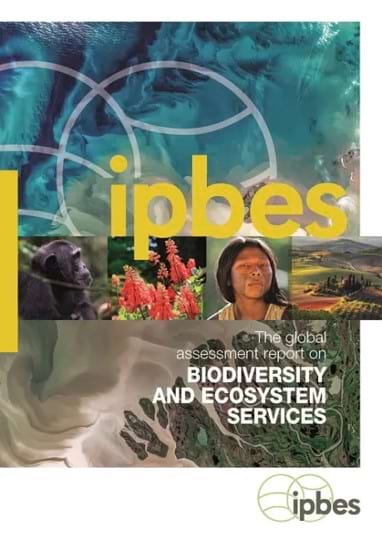Learning resources on biodiversity: dive into videos, courses and more

Last updated 17 April 2024.
At ONet, we've catalogued learning opportunities on biodiversity available online and at no cost to you.
Looking for information on biodiversity to share? Do you want an introduction yourself? Ideas for taking action? Or to enhance your professional skills?
Check out our collections of information from IPBES, short intros, and especially online courses. Thanks to generous course producers or sponsors, all of the courses are available at no cost to learners; in many cases, certification is included. Wherever available, we've also noted courses in languages other than English.
-
E-Learning opportunities on biodiversity and IPBES
-
Explore the basics of IPBES, biodiversity, and ecosystems - both terrestrial and aquatic.
-
We've also included background for food production and agriculture, as major influences on biodiversity.
-
(Future) professionals will find a list of courses on species conservation, the IUCN Red List, and the IUCN Green List.
>> See the e-learning opportunities on biodiversity and IPBES
-
-
E-Learning opportunities for action on biodiversity
Explore the IPBES summaries, and courses on every level: from individual action to national plans.-
Taking action for biodiversity: ranging from citizen science to professional protected areas management.
-
Planning and coordinating for biodiversity: ranging from the landscape approach to the latest technologies.
-
Monitoring biodiversity: from the basics to technology like DNA analysis and remote sensing.
-
Taking action for biodiversity and on climate change.
-
Taking action on invasive alien species: one of five direct drivers of biodiversity loss that is often underappreciated, underestimated, and unacknowledged.
-
Taking action with resilience and systems thinking: acquire some of the latest approaches.
-
Information on taking action in specific environments: Coral reefs, and coastal and marine ecosystems. Forests and terrestrial landscapes. Cities.
-
Information for specific industries: Food production and agriculture. Tourism. Fashion.
>> See the e-learning opportunities for action on biodiversity
-
-
E-Learning opportunities on biodiversity in business, finance, and law
Explore what IPBES has to offer for business. We've included courses for a range of timeframes: even with just one hour to spare, the courses on this list will get you started.-
Business for biodiversity.
-
Biodiversity finance.
-
Biodiversity in international law: the legal frameworks, and their application, as well as relevant training on intellectual property.
>> See the e-learning opportunities on biodiversity in business, finance, and law
-
This project was inspired by an ONet Caucus Day: thank you to ONet's many dedicated volunteers!

Header photo by Dale de Vera on Unsplash: a green sea turtle (Chelonia mydas) off Apo Island in the Philippines, a community-based sanctuary (archived article). Sea turtles (superfamily Chelonioidea) are important for maintaining two types of ecosystems: sea grass beds, as well as beaches and dunes. Some also live in symbiosis with Yellow Tang (Zebrasoma flavescens), a fish that eats algae off the turtles' shells which helps them swim faster. Sea turtles are highly significant to several human cultures, and they are popular in nature tourism. However, many species and populations of sea turtle are considered threatened. Learn more in the IPBES Global Assessment Report on Biodiversity and Ecosystem Services.
